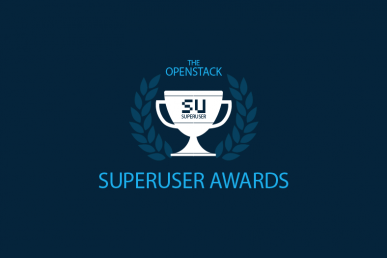It’s time for the community to help determine the winner of the Open Infrastructure Summit Denver Superuser Awards, sponsored by Zenko. The Superuser Editorial Advisory Board will review the nominees and determine the finalists and overall winner after the community has had a chance to review and rate nominees.
Now, it’s your turn.
The National Supercomputer Center in Guangzhou (NSCC-GZ), Sun Yat-Sen University is one of four nominees for the Superuser Awards. Review the nomination criteria below, check out the other nominees and rate the nominees before the deadline April 2 at 11:59 p.m. Pacific Standard Time.
Rate them here!
Who is the nominee?
A team at the NSCC-GZ, Sun Yat-Sen University.
How has open infrastructure transformed your organization?
The existing cloud platform is based on the secondary development of OpenStack. At present, more than a 1,000 nodes have been deployed on the Tianhe-2 cloud platform and the construction of virtualized resource pools has been launched successfully. To further utilize the resource capacity of the NSCC-GZ and deepen scientific research innovation and industrial cultivation, the Centre has also launched a new upgrade of the cloud service platform software project.
How has your organization participated in or contributed to open source projects?
NSCC-GZ is an end-user of OpenStack infrastructure, so we have not contributed to open source projects directly.
What open source technologies does the NSCC-GZ use in its open infrastructure environment?
We’ve used MariaDB, StackWatch, RabbitMQ, InfluxDB and notifications. We’ve also used the following core projects of OpenStack: Nova, Neutron, Cinder, Glance, Keystone, Horizon, Heat and Ceilometer.
What’s the scale of your open infrastructure environment?
The cluster architecture of the first project: five control nodes and three MariaDB nodes, one StackWatch and 512 computing nodes and 30,000 virtual machines running at the same time during tests.
What kind of operational challenges has the NSCC-GZ overcome during your experience with open infrastructure?
- Cross-version upgrading
- Multi-regional management
- Tenant management
- Administering public clouds
- Cloud platform security
How is the NSCC-GZ innovating with open infrastructure?
The implementation of an OpenStack cloud platform on the customized infrastructures of Tianhe-2 met many challenges in terms of architecture and optimization. Because it’s difficult for traditional network nodes to meet the bandwidth and stability requirements of supercomputing, a two-layer architecture was devised for the network. In it, traffic directly from and to the external network is allowed for computing nodes to mitigate data traffic of the network nodes by avoiding the complicated traffic routing in a conventional OpenStack network. We’re also using ARP-Mac binding to reduce network interruption risks caused by cyber attacks. Three-layer switching, with gateways implemented on switches, also improves overall performance and stability.
Each community member can rate the nominees once by April 2 at 11:59 p.m. Pacific Standard Time.
- Demystifying Confidential Containers with a Live Kata Containers Demo - July 13, 2023
- OpenInfra Summit Vancouver Recap: 50 things You Need to Know - June 16, 2023
- Congratulations to the 2023 Superuser Awards Winner: Bloomberg - June 13, 2023

)









